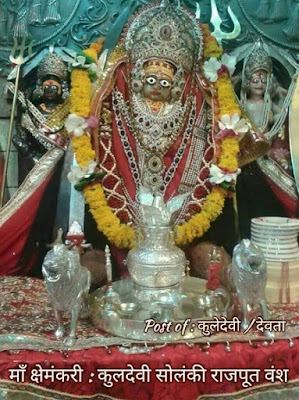Gaharwar Gherwal Rajput
Gaharwar Rajput
Rājpūt, Gaharwār, Gherwāl.—This is an old clan. Mr. V.A. Smith states that they had been dominant in Central India about Nowgong and Chhatarpur before the Parihārs in the eighth century. The Parihār kings were subsequently overthrown by the Chandels of Mahoba. In their practice of building embankments and constructing lakes the Chandels were imitators of the Gaharwārs, who are credited with the formation of some of the most charming lakes in Bundelkhand.1 And in A.D. 1090 a Rāja of the Gaharwār clan called Chandradeva seized Kanauj (on the Ganges north-west of Lucknow), and established his [447]authority certainly over Benāres and Ajodhia, and perhaps over the Delhi territory. Govindachandra, grandson of Chandradeva, enjoyed a long reign, which included the years A.D. 1114 and 1154. His numerous land grants and widely distributed coins prove that he succeeded to a large extent in restoring the glories of Kanauj, and in making himself a power of considerable importance. The grandson of Govindachandra was Jayachandra, renowned in the popular Hindu poems and tales of northern India as Rāja Jaichand, whose daughter was carried off by the gallant Rai Pithora or Prithwi Rāj of Ajmer. Kanauj was finally captured and destroyed by Shihāb-ud-Dīn in 1193, when Jaichand retired towards Benāres but was overtaken and slain.2 His grandson, Mr. Crooke says,3 afterwards fled to Kantit in the Mīrzāpur District and, overcoming the Bhar Rāja of that place, founded the family of the Gaharwār Rājas of Kantīt Bijaypur, which was recently still in existence. All the other Gaharwārs trace their lineage to Benāres or Bijaypur. The predecessors of the Gaharwārs in Kantit and in a large tract of country lying contiguous to it were the Bhars, an indigenous race of great enterprise, who, though not highly civilised, were far removed from barbarism. According to Sherring they have left numerous evidences of their energy and skill in earthworks, forts, dams and the like.4 Similarly Elliot says of the Bhars: “Common tradition assigns to them the possession of the whole tract from Gorakhpur to Bundelkhand and Saugor, and the large pargana of Bhadoi or Bhardai in Benāres is called after their name. Many old stone forts, embankments and subterranean caverns in Gorakhpur, Azamgarh, Jaunpur, Mīrzāpur and Allahābād, which are ascribed to them, would seem to indicate no inconsiderable advance in civilisation.”5 Colonel Tod says of the Gaharwārs: “The Gherwāl Rājpūt is scarcely known to his brethren in Rājasthān, who will not admit his contaminated blood to mix with theirs, though as a brave warrior he is entitled to their fellowship.”6 It is thus curious that the Gaharwārs, who are one of the oldest clans [448]to appear in authentic history, if they ruled Central India in the eighth century before the Parihārs, should be considered to be of very impure origin. And as they are subsequently found in Mīrzāpur, a backward forest tract which is also the home of the Bhars, and both the Gaharwārs and Bhars have a reputation as builders of tanks and forts, it seems likely that the Gaharwārs were really, as suggested by Mr. V.A. Smith, the aristocratic branch of the Bhars, probably with a considerable mixture of Rājpūt blood. Elliot states that the Bhars formerly occupied the whole of Azamgarh, the pargana of Bara in Allahābād and Khariagarh in the Kanauj tract. This widespread dominance corresponds with what has been already stated as regards the Gaharwārs, who, according to Mr. V.A. Smith, ruled in Central India, Kanauj, Oudh, Benāres and Mīrzāpur. And the name Gaharwār, according to Dr. Hoernle, is connected with the Sanskrit root gah, and has the sense of ‘dwellers in caves or deep jungle.’7 The origin of the Gaharwārs is of interest in the Central Provinces, because it is from them that the Bundela clan of Saugor and Bundelkhand is probably descended.8
The Gaharwārs, Mr. Crooke states, now hold a high rank among Rājpūt septs; they give daughters to the Baghel, Chandel and Bisen, and take brides of the Bais, Gautam, Chauhān, Parihār and other clans. The Gaharwārs are found in small numbers in the Central Provinces, chiefly in the Chhattīsgarh Districts and Feudatory States.







